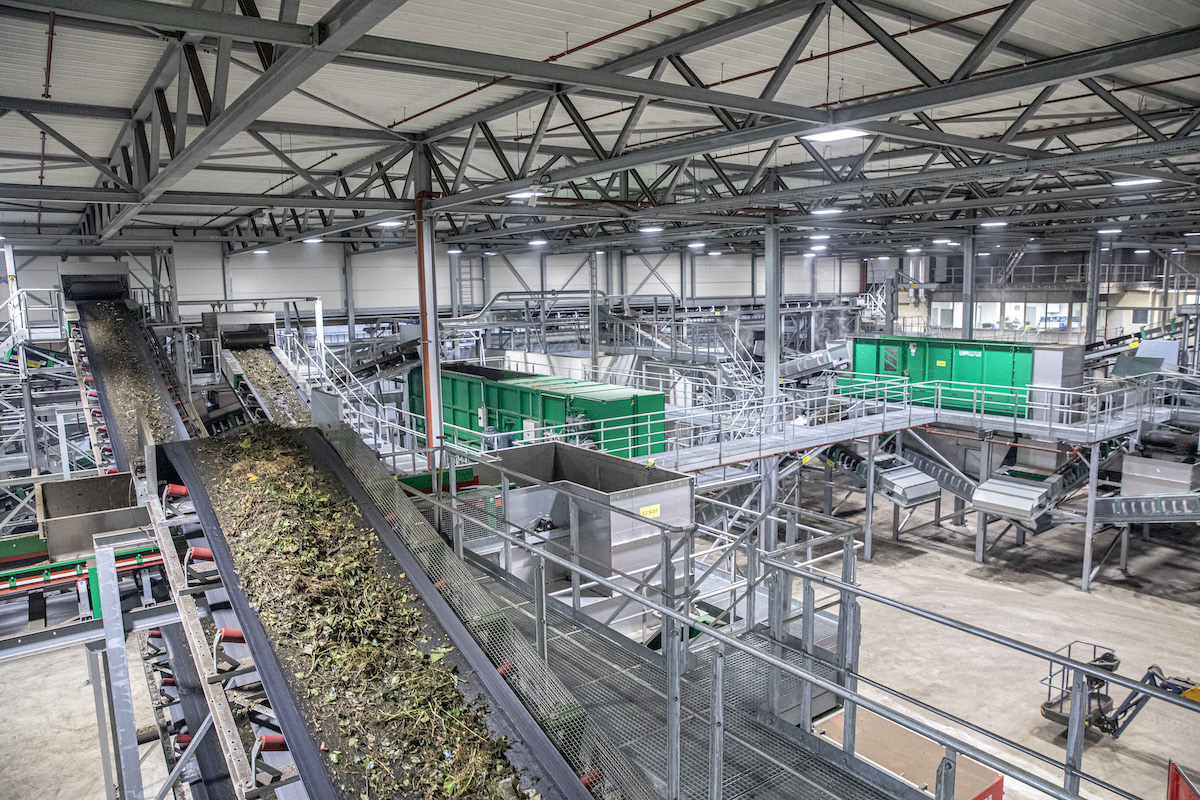VFG plant
In many European countries, fruit, vegetable and garden waste is collected in a separate bin. This is valuable organic matter. It is used to make compost (for the garden or fertile fields) and to generate renewable energy through fermentation. But how does that work exactly?

The main aim of our VGF reprocessing plant is to filter out interfering substances. Many people do their best, but glass, stone, metal, paper or plastic is often left behind in their organic waste. This is extracted using magnets, sieves, wind shifters and other separation methods. An example of this is the X-tract, a radiation machine that uses X-ray and infrared technology to recognise types of waste down to the molecular level. Stone and glass are extracted from the VFG based on their permeability (density).
Fermenting for biogas
The VGF is split into three fractions (fine, medium and coarse) in a pre-processing step by sieving it. The middle fraction goes to a digester to produce biogas. What remains after this process is digestate. The digestate is mixed again with fine and coarse VGF fractions and goes to the composting plant. Air is added during the composting process. The air, together with bacteria and moulds, decomposes organic material, while warming it up to around 60°C. Any weed seeds in the material present lose their germinative power because of the temperature, and the composted material is dried. After about three weeks, the composted material is sieved during post-processing. Anything between 10 and 12 mm is suitable for use as compost.
Valuable minerals and soil structure
Compost is used as a soil improver. It contains valuable minerals and enhances the soil structure. Farmers use it to help their fields retain more moisture and nutrients, for instance. Compost is indispensable in the horticultural sector, and in your own garden, too.
In the finishing process, anything bigger than 12 mm is separated into three streams, namely wood, stone/glass and residue, using ballistic separators after infrared and X-ray technology. The wood fraction is processed as fuel in biomass power plants. Road construction companies use the stone/glass fraction as a building material. The remaining residual fraction, consisting of textiles, paper and plastic, is processed thermally.
Practically everything is reused
On average, 60% of all waste in the VGF container is turned into compost. Of this, 20% is moisture, 10% is wood fraction, 6% stone/glass and ultimately only merely 4% is residual waste (plastic, textile).


